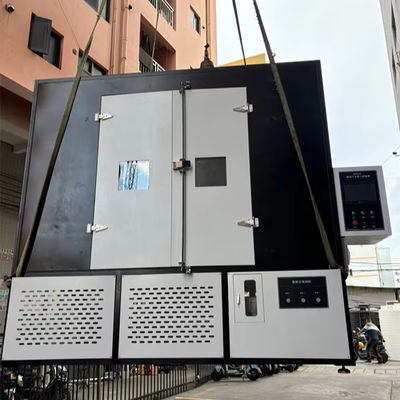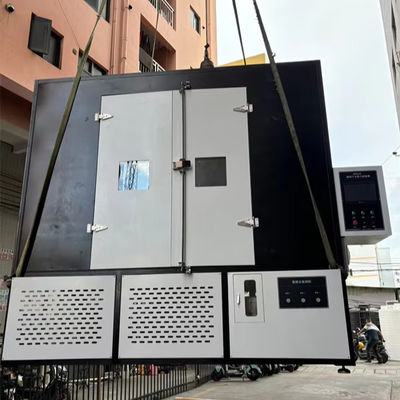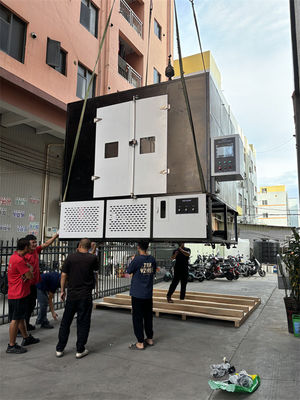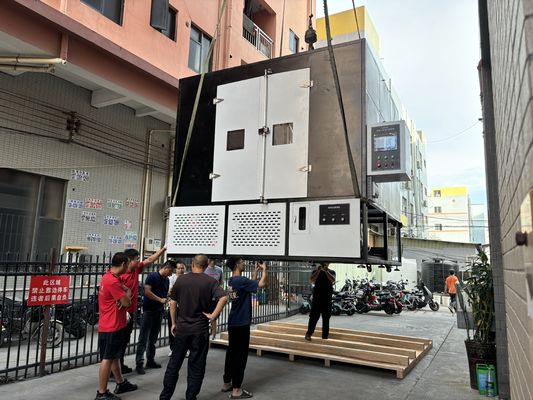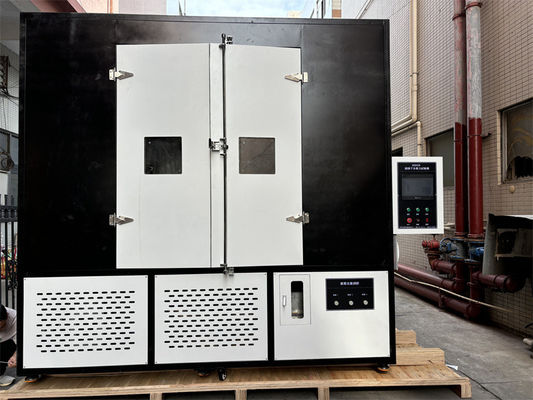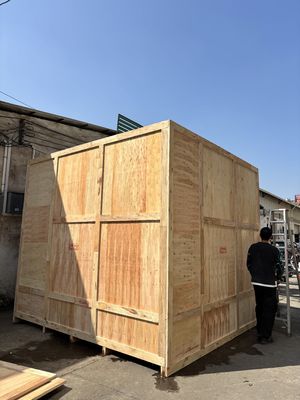Product name:
Technical Specifications for the 5000 - hour Multiple Stress Test Setup in accordance with IEC 62730:2024.
Test Conditions:
The cycle of stresses applied to the insulators and repeated for a period of 5 000 h is shown in Figure 3. The cycle is designed
so that the test specimens are also subjected to the effects of temperature variation and condensation .
Artificial Rain:
The artificial rain shall be provided by nozzles mounted above the test specimens and outside their perimeter (see Figure 4 ). The
average precipitation rate shall be in accordance with IEC 60060-1 . Water of a minimum resistivity of 85 nm shall be used. Each
of the test specimens is sprayed individually.
Salt fog calibration:
The calibration will be carried out before the start of the test.
At least two clean collecting receptacles with a collecting area of 8 000 mm2 ± 2 000 mm2 and a maximum height of 100 mm each are placed as close as practical to the position of the ends of the test object. The receptacles are positioned in such a way that they are not shielded by the test specimens and to avoid dripping from the construction elements of the chamber or another source.
They should collect between 1,5 ml and 2,0 ml of precipitation per hour (corrected to 8000 mm2 collecting area) averaged over a minimum period of 16 h.
NOTE The flow rate necessary to obtain such precipita tion (typically of the order of 0,3 l/m3h based on a chamber not larger than(15 m3) should be noted. (The water flow rate is defined in l itres per hou r and per cubic meler of the test chambe r volume. )
Subsequently du ri ng the test, the flow rate should be checked at least every 100 h and should remain within ± 25 % of the initial value.
it is not permitted to re-circulate the water.
General conditions:
1- Training will be provided on the maintenance and use of the device
2- After the installation is completed, the device will operate without any problems for 1 month (4 weeks) for acceptance.
3- Electrical diagram and water pipe connection system diagrams will be provided
4- Maintenance manual will be provided
5- User manual will be provided
6- Parts in contact with salt fog and rain will be stainless
7- Electrical components will be suitable for 380V infrastructure
8- Warranty conditions will be specified
9- Spare parts will be provided for 10 years
10- Consumables list will be provided
Core advantages of insulators:
1.Excellent insulation performance
Insulators can effectively isolate high voltage by increasing the creepage distance, prevent current leakage and arc flashover, and ensure the safe operation of the power system. For example, composite insulators are made of materials such as silicone rubber, which have excellent resistance to pollution flashover and can maintain stability in heavily polluted environments. 2.High mechanical strength and durability Modern insulators, such as the fourth generation epoxy resin composite insulators, have higher mechanical reliability and can withstand extreme mechanical loads (such as wind vibration, icing) and temperature changes, reducing failures caused by material degradation.
Future Development Trends of Insulators: 1.Material Innovation and Performance Upgrade The fourth generation hard composite insulator: using epoxy resin based materials, it solves the problems of interface sealing failure and self explosion of the previous three generations of products, and has high mechanical strength and pollution flashover resistance. It has entered the commercial pre production stage 710. Nanocomposite materials: By adding nanoparticles to enhance the aging resistance and UV resistance of materials, they can adapt to new demands such as high-frequency harmonics in smart grids. 2.Expansion of application areas High voltage and ultra-high voltage transmission: With the upgrading of the global power grid, the demand for insulators with voltage levels of 750kV and above has surged, especially in transmission projects in extreme areas such as deserts and high cold regions. New energy and rail transit: The demand for lightweight and high reliability insulators in wind power, photovoltaic power plants, and high-speed rail contact networks is driving market growth.

 Your message must be between 20-3,000 characters!
Your message must be between 20-3,000 characters! Please check your E-mail!
Please check your E-mail!  Your message must be between 20-3,000 characters!
Your message must be between 20-3,000 characters! Please check your E-mail!
Please check your E-mail! 


